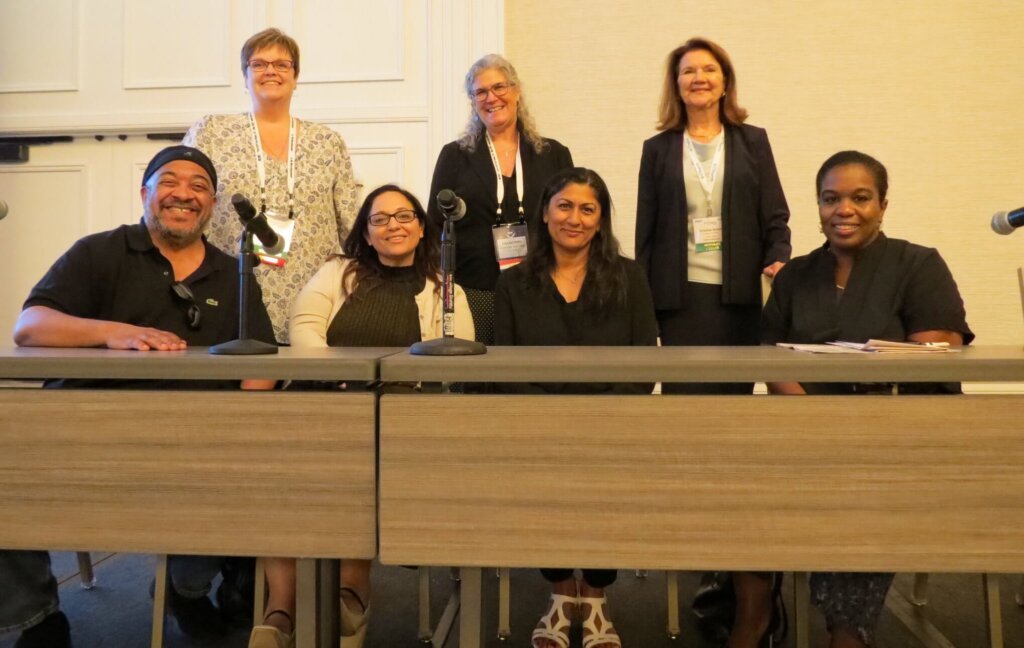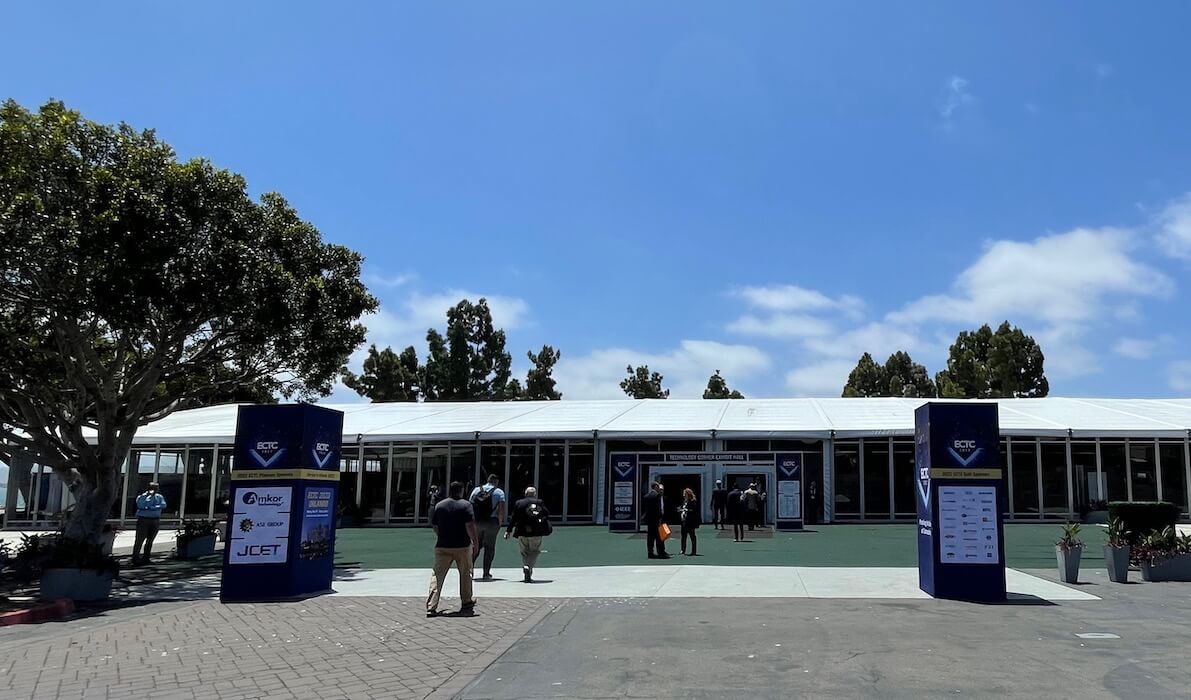I’ve started so many event blog posts since the return of live events with the phrase – it’s good to be back! But it bears repeating. And with ECTC 2022 weighing in with record attendance at about 2000 attendees, it’s clear that we are all pretty much done with virtual events and are happy to reconnect in person. In fact, the event has officially outgrown my favorite location. I was sad to learn that this is the last year ECTC 2022 will be held in San Diego. Next year will also be a change: it’s Orlando’s turn to host, but the conference will be at a new location, the JW Marriott.
Even though I’ve been back at in-person events since September of 2021, this was the first with truly international attendance, as travel restrictions ease all over the globe. I reconnected and caught up with 3D InCites colleagues and community members, some of whom I hadn’t seen since SEMICON Europa 2019. And since she couldn’t make it to IMAPS DPC, I was able to present Tanja Braun, Fraunhofer IZM, with the 3D InCites Research Institute of the Year Award for the Panel Level Packaging Consortium 2.0.
Advanced Packaging and Co-Packaged Optics
So, what did I learn this year? From the advanced packaging and co-packaged optics special session, I learned that thanks to chiplet integration, optical interconnects can be used to complement copper and get more bandwidth off the package. However, challenges remain to bring co-packaged optic technology to mainstream applications.
It’s the same old same old – cost needs to come down, standardization is needed… we’re looking at 5-10 years before these technologies reach the mainstream. But the UCLe Consortium is working to standardize interfaces that will provide a plug-and-play solution that allows multiple process flows and multiple.
Co-design is more critical than ever. Like 3DICs, co-packaged optics will be driven by application need – starting in high performance and then finding its way into other applications when the cost comes down through modularity, and standardization. The conversation was reminiscent of the early days of 3D TSVs, and I suddenly realized I’ve been in the industry long enough to recognize the path emerging tech takes to get from concept to commercialization.
I also learned that after at least 15 years of development, hybrid bonding had become the darling of the industry. Everyone I spoke with commented that this year there were two full tracks of papers (running concurrently) dealing with advancements in hybrid bonding. We’ve long suspected this elegant approach would be the answer to technology bottlenecks, and it’s exciting and a little gratifying to see it take hold. Our community member Adeia (formerly known as Xperi) pioneered this technology and continued to innovate to bring it to commercialization for RF devices, image sensors, and memory. The next stop is logic.
Diversifying and Retaining Your Workforce

From my post as moderator of the Diversifying and Retaining Your Workforce, a combined effort of ECTC and co-located iTherm, I learned that diversification alone is not enough. We need to create cultures of inclusion to decrease the attrition rate of our workforce.
Expert panelists Antoinette Hamilton of Lam Research, K.T. Moore of Cadence, Najwa Khazal of Edwards, and Bina Hallman, of IBM shared their real-life experiences and provides some practical tips that we can all implement at our companies, even if HR or Hiring Manager is not in our job description. For example, we can seek out others who are not like us and build relationships with them.
We also need to understand that equity and equality are not the same. Equality means that everyone is treated the same, regardless of their differences. Equity recognizes that we are all different, everyone is provided with what they need to succeed. For example, working parents may need more flexible hours to accommodate their children’s schedules.
As one of the co-organizers along with Kim Yess of Brewer Science, and Cristina Amon of the University of Toronto, I was thrilled when several attendees – women and men alike – sought me out later to comment on how informative the session was, and how they got more out of it than any they had previously attended.
ECTC 2022 Podcast Episodes
I spent the majority of the week recording podcast interviews with our exhibiting community members, invited speakers and panelists, and industry visionaries because it’s from them that I learn the most.
For example, Marvell’s Kevin O’Buckley explained the need for front-end fab cleanroom standards to migrate to both OSATs and substrate fabs as advanced packaging and assembly processes mimic front-end processes more and more.
From keynoter Chris Koopmans, also of Marvell, I learned that regardless of the US, China and Europe’s efforts to create self-sufficiency in their supply chains, that doesn’t mean the elimination of international collaboration. Diversification of supply is critical. I also learned why and how Marvell is focusing its efforts on the data infrastructure market.
Diane Scheele, EMD Electronics, and Dean Payne, Indium Corporation each talked about the challenges electronics materials suppliers face in becoming more sustainable. It’s not just about developing greener chemistries, it’s about other efforts that can help them reduce their carbon footprint.
ASE’s Bill Chen talked about efforts the Heterogeneous Integration Roadmap committees are taking to influence policymakers around the globe to invest in creating the pathway for the future of advanced packaging innovation.
From UCLA’s Subu Iyer, I learned about the important work his Ph.D. students are doing to develop what he terms “dielet” integration on an interconnect fabric. Doesn’t he mean “chiplet integration?” – nope! According to him, the correct terminology is dielet, and he explains why – you can learn more by listening to the upcoming podcast episode.
It would be almost impossible to recap every interesting and informative conversation I had at ECTC 2022 in this blog post. But you’re in luck! Because I captured most of them as your roving reporter in what will be several upcoming podcast episodes. Be sure to follow the 3D InCites Podcast on Apple Podcasts, Spotify, Google, or wherever you get your podcasts. Gotta love technology!


















